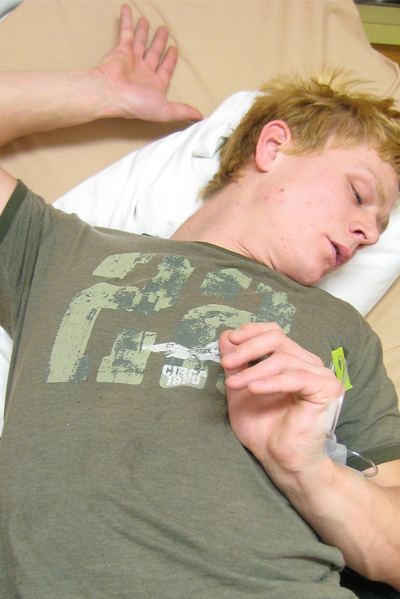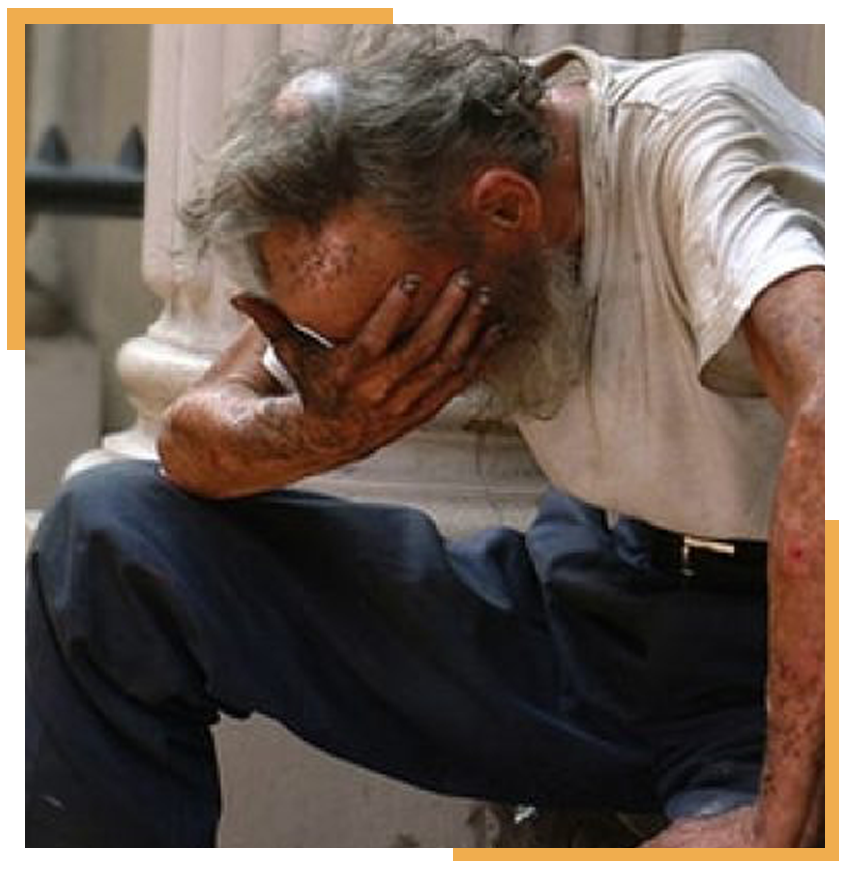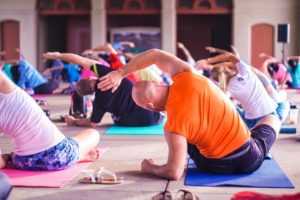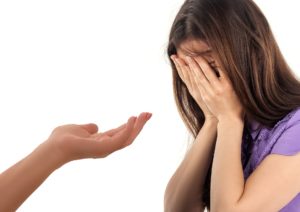Dystonia Physical Therapy Treatment
Are you looking for a dystonia physical therapy center near you? OneRehab offers dystonia therapy to help you live a more independent life.

What is Dystonia?
Dystonia is characterized by painful involuntary muscle contractions, causing the muscle to twist repetitively in different ways. It sometimes affects the entire body (generalized dystonia) or a body part (focal dystonia), such as cervical dystonia.
Dystonia refers to various types of movement disorders with varying symptoms, treatment, and causes. The neurological condition can cause intermittent or sustained movement.
Voluntary movement can worsen when a patient tries to perform a voluntary action. These movements can entail shaking or quivering that resembles tremors or twists. However, dystonia does not affect a person’s cognitive abilities, such as intelligence or memory.
Though it may be a progressive condition, dystonia physical therapy alleviates the symptoms. There are some aspects of the disorder being hereditary, but other conditions can cause the ailment. According to the American Association of Neurological Surgeons, about 250,000 people in the US have dystonia. OneRehab is a leading center for physical therapy in Richardson for dystonia patients.

Causes of Dystonia
Dystonia can affect people of all ages, but most cases begin at 40-60 years. Experts aren’t sure what causes dystonia. However, research shows it might result from nerve-cell communication alteration in various sections of the brain. It is also linked to genetic mutations, as some types of the disease are hereditary.
Additionally, dystonia can be a symptom when a patient has other diseases like:
- Wilson’s diseases
- Parkinson’s disease
- Huntington’s condition
- Injury from birth
- Traumatic brain injury
- Stroke
- Brain tumor
- carbon monoxide poisoning or oxygen deprivation
- heavy metal poisoning or reaction to drugs
- Infections such as encephalitis or tuberculosis
Despite the condition’s cause, our dystonia physical therapy center provides a unique treatment plan tailored to suit your needs.
Schedule an appointment today
to see why our family of stroke experts can help you and your family on your path to independence.
Different Types of Dystonia
Classification of dystonia varies. First, categories can be according to the age of onset, including childhood, adolescence, or adulthood. The other common classification is according to the body part it affects.
Generalized Dystonia
As the name suggests, generalized dystonia affects random body parts. However, it is common in the torso, limbs, neck, and face muscles. The condition is more prevalent in adolescents, and the primary symptom is twisted legs. Generalized dystonia has close symptoms with Parkinson's disease, cerebral palsy, tremor, and orthopedic. Therefore, it is essential to have a comprehensive diagnosis before treatment.
Generalized dystonia treatment includes deep brain stimulation (DBS) and physical therapy. At OneRehab, we offer therapy to help patients lead a more fulfilling life. Our dystonia physical therapy trains the affected muscles to overcome or avoid severe impacts of the condition.
Multifocal Dystonia
The condition affects more than two noncontiguous parts. This means that the condition does not affect parts that are next to each other. Multifocal dystonia can affect neck and leg muscles.
Focal Dystonia
Focal dystonia affects a specific muscle in the body. The condition results from excessive use of particular muscles like the hand. Hand dystonia is a good example of this neurological disorder and affects golfers and musicians. The condition affects fine motor coordination like targeting the cup. For musicians, it might be difficult to hold the mic without shaking.
Segmental Dystonia
This condition affects two parts of the body that are next to each other. Segmental dystonia is common among middle-aged and senior citizens. The condition can affect the upper and lower face or two other body parts which are adjacent. There are various types of the disorder and they affect the body differently, but the most common are:
- Spasmodic dysphonia
- Meige's syndrome
Hemidystonia
Hemi means half. From that, we can derive the meaning of hemidystonia. The condition affects one side of the body. It can affect the face, hand, and leg. Some of the causes of hemidystonia include:
- Cerebrovascular disease
- Perinatal trauma or childhood injury
- Head trauma or
- Neuronal storage disorders
Types of Dystonia (Pattern Based Clasification)
Cervical Dystonia/Spasmodic Torticollis
The condition commonly affects middle-aged people, but there are cases across all ages. It affects the neck muscles, causing the head to turn and twist or be pulled forward or back. The condition is rare and affects people who work in offices for long hours. Cervical dystonia doesn't affect life expectancy, but it can be painful in some cases and affect the quality of life.
OneRehab offers the best cervical dystonia physical therapy to manage the condition. We create custom programs for each patient because the impact manifests differently in each individual. Some cervical dystonia physical therapy techniques we use are dry needling, movement training, yoga, and relaxation exercises.
Oromandibular dystonia
It primarily causes issues with the opening and closing the mouth, swallowing, or speech because it affects the jaw, tongue, and lips. According to a medical report by Allyson and Lauren, the disorder affects around 3 people in a million population. OMD is also referred to as cranial dystonia, a broad name for all dystonia cases that affect the face and mouth.
The condition is prevalent in individuals above 40 years and seems more common among women. The condition can arise from regular wind instrument playing like flute and saxophone (embouchure dystonia). The primary symptoms of OMD are:
- Jaw pain
- Tongue biting
- Wear of teeth from grinding
- Involuntary face or mouth muscle movement
Blepharospasm
It affects the eyes, where it starts with uncontrollable blinking. At first, the condition affects one eye, but it progresses to the other. Blepharospasm can cause the eyes to open or remain closed, causing functional blindness.
Some conditions that can predispose you to the conditions are dry eyes and Tourette's syndrome. The condition is more prevalent in women above 40 years. However, there is no associated cause in most cases. Blepharospasm can affect the patient's way of life, especially in severe cases where the eye may close for hours. You may also have to give up activities like driving and sports in the advanced stages of the disorder.
It is not all lost with blepharospasm because physical therapy can improve eyelid muscle coordination. OneRehab applies various techniques to prevent the progression of the condition.
Tardive dystonia
This condition results from long-term use of psychiatric medication. The condition causes involuntary muscle movement that affects movement. Tardive dystonia symptoms are temporary because they occur due to reactions to drugs. It is treatable by taking medication.
Tardive dystonia affects the lips, tongue, face, and trunk. If not managed early, the condition is progressive and can worsen with time. OneRehab offers tardive dystonia therapy to help you overcome the impacts of the disorder. Our physical therapy activities are customized to meet your needs.
Musician's Dystonia
The top three musical instruments associated with this condition include guitars, piano, and brass instruments. The disorder can begin from the right hand, affecting the fingers or the left, depending on the affected side. According to Dystonia Medical Research Foundation, the condition affects more than 1% of the musicians. The affected numbers could be higher because there are many unidentified cases.
There are 2 primary types of musician's dystonia depending on the part affected:
- Embouchure dystonia- this condition affects musicians who play wind instruments like the saxophone.
- Hand dystonia- the disorder affects coordination of the hand muscles because of playing instruments like guitar.
Paroxysmal dystonia
This condition occurs in episodes of uncontrolled muscle movement. A patient can experience the issue when having an attack. However, when it's over, the person is normal for the rest of the time.
The episodes take a short time, and at times they are painful. After the episode, there are no symptoms. Some of the predisposing factors to paroxysmal dystonia are coffee, alcohol, sudden movement, or fatigue. Paroxysmal dystonia can occur in any period from teenage.
Some people experience episodes daily, while in other patients, it is infrequent. OneRehab uses physical therapy to treat paroxysmal dystonia.
Torsion dystonia
It is a rare condition that affects the whole body, seriously disabling a patient. It is mostly an early-onset disorder that gets worse with time. Torsion dystonia causes muscle contraction and leads to weird body contortions.
According to a Bio-Med Central report, the disorder affects one person in a population of 30,000 in the United States. The condition has no symptoms of neuronal degeneration or heredity. Torsion dystonia starts in a single organ, like the leg, and progresses to other parts.
OneRehab helps patients manage torsion dystonia through physical therapy. We create remedies that restore normal body function and some independence. It is advisable to seek intervention measures early before the disorder affects many body parts.
Writer's cramp
Writer's cramp is a type of focal dystonia. The condition manifests mostly when one is writing. It can affect the forearm, fingers, or hand muscles. The condition causes pain or makes your handwriting illegible.
The primary causes of writer's cramp include:
- Poor posture when writing
- Writing for long hours
- Poor holding of the writing instrument
- Holding the writing instrument too hard, causing muscle strain
Signs & Symptoms of Dystonia
Dystonia can affect different body parts, and the symptoms can vary from mild to severe. The signs also progress as the condition advances from one stage to another. The general symptoms of the condition include:
- Muscle contractions from the neck, leg, or arm.
- Contractions when performing a specific action, such as writing.
- Contractions on the neck, making the head turn to one side or sideways, leading to pain.
- Rapidly blinking or getting involuntary spasms that cause your eyes to close.
- Speech difficulties
- Vocal tremors
Some of the symptoms may become worse during stress or fatigue. The constant muscle contractions cause fatigue in patients with dystonia. There is a significant difference in how the symptoms start across the ages.
When it starts early in childhood, it begins on the foot or hand, with symptoms worsening as a person grows. However, the symptoms slow down in the teenage years. When dystonia affects adults, the symptoms start in the upper body. We offer dystonia physical therapy to help you regain your movement and live a more independent life.
Dystonia Treatment and Management
The severity of the condition determines the treatment options. Though, a combination of medications, therapy, or surgery can help to manage the symptoms. The use of Botox in specific muscles may reduce muscle contractions. Botox treatment is low-risk, and patients can use it every few months. Other medications are used to target neurotransmitters that affect muscle movement.
Dystonia Physical Therapy
Physical and occupational therapy may ease symptoms and improve movement, posture, balance, and mobility. Speech therapy is ideal for those with spasmodic dystonia (voice dystonia).
OneRehab physical therapy for dystonia helps patients improve muscle coordination, strength, and body alignment. Due to contractions, dystonia can lead to fatigue and activity inefficiencies. We come up with remedies that help you relax and improve activity efficiency. For patients looking for physical therapy for dystonia near me, OneRehab offers the best treatment.
We equip the patient with skills on how to live and cope with the condition. Occupational therapy ensures they can adjust to social situations without being uncomfortable and attain some level of independence. Some of the dystonia physical therapy exercises we engage patients in include swimming, yoga, pilates, and Tai Chi.
More Resources
- https://www.ninds.nih.gov/Disorders/Patient-Caregiver-Education/Fact-Sheets/Dystonias-Fact-Sheet
- https://www.mayoclinic.org/diseases-conditions/dystonia/symptoms-causes/syc-20350480
- https://www.aans.org/en/Patients/Neurosurgical-Conditions-and-Treatments/Dystonia
OneRehab | Richardson
1761 International Pkwy Suite 135, Richardson, TX 75081, United States
OneRehab | Dallas
6080 N Central Expy #125 Dallas, TX 75206
Email Us
info@onerehab.com
Call Us
972 845 7875
Working Hours
M - F 7:00 AM – 7:00 PM
Sat 8:00 AM – 2:00 PM



